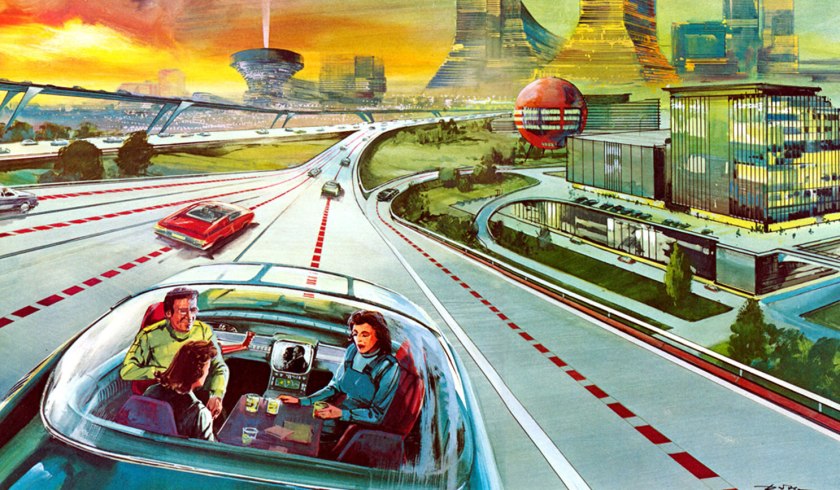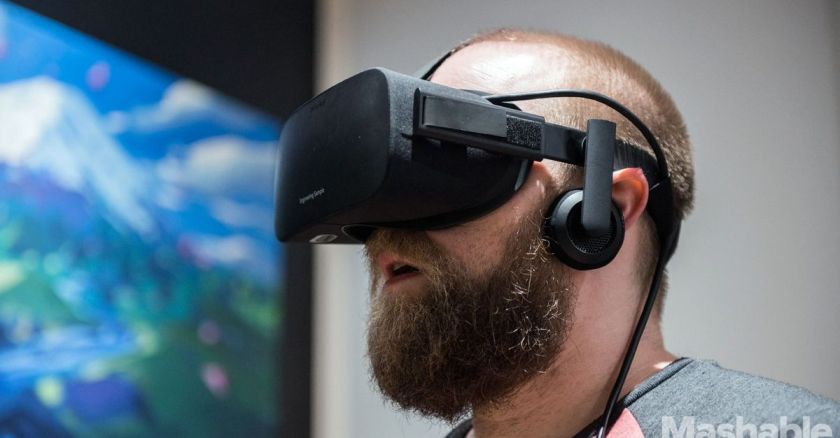
Last week I read a column on ESPN about how one can only judge the merits of an NFL draft 5 years after it happens, to see how the players pan out (or not).
In the spirit of judging the past, let’s see how well experts from the 1950s did in predicting the distant future–today.
So I dug into the archives of this blog (kidding) and pulled out an Associated Press article entitled “How Experts Think We’ll Live in 2000 A.D.” published on December 27, 1950. This fascinating article covered how scientists at the time imagined the future of movies, flight, space travel, healthcare, and role women, would manifest.
I’ll list the predictions one by one, and then offer some remarks.
Third dimensional color television will be so commonplace and so simplified at the dawn of the 21st century that a small device will project pictures on the living room wall so realistic they will seem to be alive. The room will automatically be filled with the aroma of the flower garden being shown on the screen.
Hmm… this one is hard to judge. We have 3D TVs (though they are now considered passé), as well as small TVs (think your smartphone or tablet), and mobile projectors. We do not yet have machines to project the aromas of flowers… while the technology is there I’m sure, but there probably isn’t a demand for that.
The woman of the year 2000 will be an outsize Diana, anthropologists and beauty experts predict. She will be more than six feet tall, wear a size 11 shoe, have shoulders like a wrestler and muscles like a truck driver. She will go in for all kinds of sports – probably will compete with men athletes in football, baseball, prizefighting and wrestling.
So that’s Diana the Roman Goddess, not the Princess of Wales. To be frank, people today are probably more “out-sized” than people from the 1950s, and that’s a truism for both men and women. So I would say no, most women of today are not built like truck drivers or professional wrestlers. But there certainly is more opportunities for women to participate in sports which, back in 1950, were less accessible to women.
The Third World War – barring such a miracle as has never yet occurred in relations between countries so greatly at odds – will grow out of Russia’s exactly opposite attempts to unify the world by force.
I’m actually shocked that we haven’t had a WWIII yet. The 1950s prediction of Russia being the aggressor is ironic–although Communism fell apart in the Soviet Bloc during the early 1990s, Russia is still considered a warmonger even today.
The telephone will be transformed from wire to radio and will be equipped with the visuality of television. Who’s on the other end of the line will seldom be a mystery. Every pedestrian will have his own walking telephone – an apparatus by a combination of the X-ray and television.
Now we’re getting somewhere. This prediction is eerily close to what we have today, with the combination of smartphones, Facetime, and Skype. Everyone has their walking telephones! What seemed absurd in the 1950s is now a reality. Let’s all give ourselves a collective pat on the back (wait… what do you mean we don’t yet have automated back-patting machines in 2016?).
The nation’s industrial and agricultural plant will be able to support 300 million persons 50 years from now – twice the present population. Land now unproductive will be made to yield. Science will steadily increase crop production per acre. Technological, industrial and economic advances will give the American people living standards eight times as high as now.
As of 2014 the United States had 318 million people, so that prediction is fairly close. Crop production has increased, though with the help of GMOs and non-organic fertilizers, but I guess you can’t win ’em all. And that bit about people’s living standards? Eh… I’m not so sure:

Space platforms, sent out from earth, will end mid-century’s “iron curtain” era by bringing the entire globe under constant surveillance.
Whoa. Edward Snowden, is that you? We are definitely under constant surveillance today. As a matter of fact, the NSA is probably watching me as I’m typing up this blog post (side note: dear NSA, if you are watching, you should already know that my lawn is in disrepair and I am having trouble finding a good lawn guy. So since you monitor everything and know everything, please send a good lawn contractor my way. I’d be very grateful).
Combination automobile-planes will have been perfected.
If you’ve ever sat in traffic, you probably at some point zoned out, looked into the sky, and wondered to yourself, “man, if only my car was the Autobot Bumblebee and could just transform and fly away, I’d be home already.”
We supposedly already invented the flying car as early as the early 1900s. So, 1950s scientists, perhaps you should do your homework before you write predictions for the so-called future!
People will live in houses so automatic that push-buttons will be replaced by fingertip and even voice controls. Some people today can push a button to close a window – another to start coffee in the kitchen. Tomorrow such chores will be done by the warmth of your fingertip, as elevators are summoned now in some of the newest office buildings – or by a mere whisper in the intercom phone.
With the “Internet of Things,” we’re fairly close to this prediction. Today we have self closing blinds, automatic coffee makers, and other gizmos. Well done, 1950s scientists.
Radio broadcasting will have disappeared, for no one will tune in a program that cannot be seen. Radio will long since have reverted to a strictly communications medium, using devices now unheard of and unthought of.
Two hits in a roll. Well done, 1950s scientists. This one has come true as well. Since the advent of TV and internet, fewer people listen to the radio today.
Some movie theaters of A.D. 2000 may be dome-shaped, with ceiling and walls arching together like the sky. These surfaces would be the “screen.” Most action would still be in front of you, as now. But some could be overhead, some at the sides, and some even on the wall behind. A little girl steps into a street in the action before you – and you turn around and look behind you to see if an auto is coming.
We don’t have these theaters today, but virtual reality (VR) headsets (a la Oculus Rift or Gear VR) are making this type of entertainment very accessible. VR, by the way, shall be the subject of a blog posting in the near future.
So tell your children not to be surprised if the year 2000 finds 35 or even a 20-hour work week fixed by law.
ROFL. LOL.
Despite all of the technology innovation and increase in productivity since 1950, it’s mind-boggling how much we still work today. Seriously–why are we so busy? 50 years from now I bet our children and grandchildren will all be working 100 hour weeks.


 This weekend was the 24 Hours of Le Mans.
This weekend was the 24 Hours of Le Mans.






